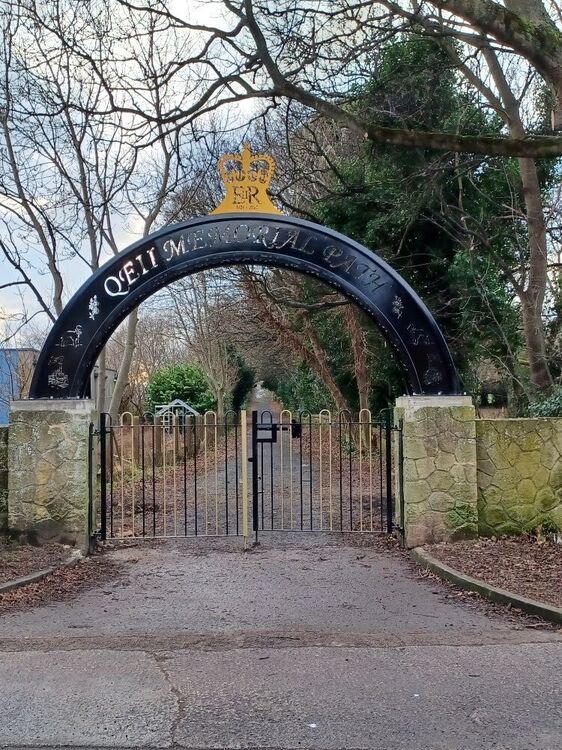Contributor Leaderboard
Popular Content
Showing content with the highest reputation since 02/01/25 in all areas
-
Billy Mcglen was my Grandad. I often (on what would have been his birthday) Google his name. This year I came across your post. It's nice to think he is so well remembered.4 points
-
3 points
-
I hope Christmas has brought you all happiness . Very best wishes for 2026. World peace would be great .3 points
-
3 points
-
Malcolm Robinson Bedlington West Ward. I’ve been told I need to expand and better explain my post about the proposed project at West Lea. (Well that makes a change from people saying I’m too verbose!) The project I’m promoting, and have been for some years now, is to see a multifunctional facility at West Lea, next to the cemetery. We need a community centre and we need some sporting facilities so why not get them both in one hit, because in all likelihood we will only get one chance at this. That’s why there are questions in the survey about both sports usage and community usage. I’m also keen to see some SEND provision so that’s why that is in too! Also outside I want the full sized pitch restored to level and with drainage, which will help with, or give access for, some drainage for the path. Beyond that two junior pitches installed. With new changing rooms etc. in the new building this will be the best pitch in Bedlington and have decent facilities for our youngsters coming through. I’ve identified a funding route and have a small group of people who are willing to manage it, namely the Bedlingtonshire Development Trust. They have even agreed to do the training necessary so NCC will consider them suitable. Big thanks to each and every one of them for their commitment! I asked a month or two ago for some ‘likes’ to a post I put out about this in an effort to gauge some public support. What came back was about double what NCC get to their consultations and that enabled me to silence the NCC doubters and press through onto the next level. This time it’s a full feasibility study because we have to prove it’s needed, wanted and sustainable. That will be based off the replies to the survey and that’s why I need as many people as possible to fill it in! This isn’t just about the West End of Town or the Top End its for the whole of Bedlington so please fill it in if you would support it wherever you live. Let’s get behind something positive for a change and let’s start to address the lack of facilities investment into the Bedlington for the past few decades! Click the link and fill the survey in......about 2-3 mins! https://forms.office.com/pages/responsepage.aspx...3 points
-
You might have to explain that to our nursery age school children who are being offered gender realignment services! The world is going mad!!!!!!!3 points
-
Just to keep everyone updated.......here is my 'application' for County Councillor. So we have a full list of candidates for the NCC Bedlington West Ward seat and it looks like an election has had its starter gate opened with claims, counter claims, spin and misdirection already! As I have said the only promise I give is to continue to do my best for the ward, so more of the same if you like! Like any job applicant a CV would seem an obvious starting option. So here are the main points in mine: As a resident I wasn’t happy with the way our Town’s needs had been ignored for decades so as a private individual I decided to try and do something about that. You don’t really need a position but you do need a commitment and some level of understanding as to how the system works. Set up the Bedlingtonshire Development Trust. Worked with NCC to get the sports pavilion at Gallagher Park. Ran a Fields in Trust campaign after getting Gallagher Park qualified as a QE11 Park and won a national award! Did the training in counselling skills so I could interact confidentially with people on a one to one basis. Completed training in procurement, project management, VCS development, planning training and others which I thought would be beneficial. Got the funding for and ran a Heritage themed event with Leading Link, which we had to go to Manchester and receive a commendation for. I had to go to Blyth Sports Centre and push in to argue with the Olympic Torch Committee for Bedlington to be included in their processional route so our kids could see it pass too. This after NCC said no! With Richard from Salvation Army and Lyn from Leading Link we had over 5000 people lining a very wet Front Street that day! Bedlington Terrier seats……..my design and my project with the money made paying for Xmas lunches for our seniors and support for our food banks. In May 2013 I was elected as a Town Councillor. The chevron parking on Glebe Road, my idea to stop the double parking there so others could pass. My project through the Town Council. New footpath down to Attlee Park, to stop the need for pedestrians having to step out on the main road. Again my project through the Town Council. After lacklustre and aimless two years under Labour control, which was more about claiming the council to be a Labour one instead of actually doing things, I was elected to the chair of the Town Council. What happened in the next two years was more than had happened at any time before! New Bus shelters throughout. Street furniture painted gold and green. Two new play parks at West Lea and Meadowdale. New Town Gateway features, which I designed and oversaw the project. Started on the discussions with a local resident who made sun dials internationally, but who couldn’t get one in their home town. Now in the Market Place! We bought the two new commemorative seats which now sit behind the War Memorial after I did the research and costing. Restarted the Town Fair and held it on the street. First to put on a show for the Xmas Lights switch on. Put in the original three defibrillators onto the street after the existing NCC Councillors refused to back them. Brought in a REDUCTION to the Town Council tax charge, the only one to ever manage that and do everything (plus) listed above. No wonder we got phone calls from all over asking how on earth we had done it. Then in 2017 I was elected to County Council. I said “I’m drawing a line in the sand…….we don’t go backwards from here!” First job get a light controlled crossing next to the COOP because it was gravely needed! All main roads into my ward area resurfaced. I recorded every pot hole in the ward and sent in the lists. I also had to stand up to what had happened at Arch and Active Northumberland to try and bring some resolution after unbelievably bad independent audits. Covid hit and while everyone else hid under the blankets I was running around dropping food parcels off because the government essentially locked up elderly people for 12 weeks! I made sure the ones I knew in my ward had something at least once a week. I got the 100’s of food parcels from the Salvation Army so I raised money for our food banks to make sure I wasn’t taking out more than I put it! West Lea Cemetery needs a special mention: First try and sort out the flooding issues which saw flooding on the children’s graves. Cleaned out the main culvert pipe which runs alongside the western side of the cemetery. Next the road inside the Cemetery needed resurfacing. Helped set up the Friends of West Lea Cemetery group. Did the D Day commemorative plaque at the side of the entrance. Renovated the old derelict hut which stands in there for a base for the Friends of West Lea Cemetery. Flooding reoccurred so I had to fight for new field drains fitted at the lowest bit on the South side. Did the Covid plaque at the other side of the entrance. Garden of Remembrance needed sorting out. The path between the cemetery and St Bennies needed sorting out too so QE11 Memorial Path, again after Bedlington not planned to get one. Now we have the best! New railings along the Front. Worked with Cemeteries management to turn the look of this cemetery around. It’s a popular place to visit these days and the Garden of Remembrance is now filled with flowers on tended plots. Plessey Woods needs a mention too. Went down 8 years ago and spoke to the staff there and saw it was only been used by a few dog walkers. Lobbied for the money to get the new playground done as well as path repairs etc. I got the funding on the proviso that I increased visitor numbers Put on events (children’s and adults) to get people there so they could see what was on offer. Argued for the extra parking area because it was proving that popular now. Had to get double yellow lines outside to stop the indiscriminate parking along Shields Road. Set up a Friends of Plessy Woods group. Continually argued for café and toilets upgrades which are now planned for end of this summer. Came up with the idea of Climbing Boulders as a way of attracting more people down there. Worked on the design, costs and siting with manufacturers and park managers. Should see them soon! More events in the pipeline for this park! Road speeds are an issue in several places, first one to tackle, Hazelmere. The internal roads have now gone to 20 MPH. Also the B1331 as it passes four school entrances……now 20 MPH after being told it wasn’t going to happen! New path opposite Hartford Hall, again after being told it wouldn’t happen. Had to fight to get Bedlington into the mix for a PlayZone but we were eventually. Then loads of fences and hoops to jump to get it actually built. Now being built at West Lea. The first new build leisure facility in Bedlington I can remember! I’ve also had to tackle house builders on behalf of residents and we have residents meetings with them (I’d like to say regularly but………) so problems can be worked out and residents made aware of what’s going to happen. Sensible communications is very often the key! I have documented just about every aspect to this ‘job’ over the last 8 years even to the point of being referred to solicitors when it doesn’t suit one party’s narrative! I’ve told everyone what’s going on, what’s about to happen and the reasons behind the way I’ve voted on most issues. I can’t think of any resident who has been in touch and who I’ve not responded to. We might not get the answer we wanted but all concerns have been forwarded to the right place. In short this is the sort of stuff I’ve been doing for the last 8 years, a lot of which aren’t really the remit of a councillor but hey it’s Bedlington, someone has to do something! This isn’t an exhaustive list by any means, and for more examples in much greater detail take a look at the Historical Factoids I posted on my Facebook page: “Malcolm Robinson Bedlington West Ward.” If you vote for me it’s not difficult to work out what you will get! Trying to inject some common sense into the county council instead of the political spin and gyrations of the Political Party’s! ‘Residents First’ because I don’t have a political party to promote and gain benefit for, so the only people who tell me what to say and do are my residents. We don’t go backwards and we don’t leave anyone behind! It’s that simple really!3 points
-
Welcome back! You are right when you say that there were lodging houses at the entrance to Mugger’s Neuk in 1861. There were in fact two, but in 1851 these were one larger lodging house. As I mentioned earlier, housing was scarce for the increasing workforce so as well as the lodging house which housed 17 lodgers (and the family of three who ran it), there were a further 60 people lodging in the market place within the homes of various families. However, I don’t think your relatives were lodgers of either sort. In 1851 there were no Dixons living in the lodging house or lodging with private families in the area where the lodging house was ie. the market place. If your relative is who I think he is, Charles Dixon with father of the same name and a mother named Dorothy, then he did live in the Market Place just to the left of the Howard Arms when facing that building. Why do I think this? The enumerator’s route, 1n 1851, went from “the first house in the corner below the Cross to the last house at the east end of the town on the same side”. He then crossed the road and enumerated “the south side of the town from the first house in the Mill Yard at the east end to the last house in the Half Closes on the same side”. There was a general lack of postal addresses in the 1851 census as the postal system hadn’t really developed at that time. However, there were schedule numbers for each household in the census documents and certain locations were identifiable by the occupation of the residents – such as “innkeepers” and “grocers” who usually lived on the premises. Looking at the 1851 census for Bedlington, district 2a (which includes the market place), and following the enumerators route, as he himself describes it above, the first house below the cross has schedule number 1. Successive sch. nrs. are given in sequence to the various households along the route. NB. The sch. nr. applies to a household, NOT a building. There may be several households in one building. Continuing eastwards in the enumerator’s footsteps from Muggers corner towards Leadgate House (on the corner opposite the Northumberland Arms) you will find at sch. nr 29 an innkeeper with the unusual surname Petrie. Unfortunately, there is no name to the inn. However, if we look up Petrie in the following 1861 census, we can see that he is in the same position and that his business is the Howard Arms. That sorted out we leave sch. Nr 29, the Howard Arms, and get back onto the enumerator’s route. We don’t have to go far to find Charles and Dorothy Dixon together with 5-year-old Charles Dixon and his siblings because he is at sch. nr 31, almost next door to the tavern. At sch. nrs. 30, 31 and 32 are three small households which probably, but not certainly, occupy the small row of buildings which I’ve arrowed blue in the map below. What I can say with certainty is that Charles Dixon lived in one of the buildings - or the buildings in the yards behind them -which I’ve marked in red.3 points
-
Its getting pretty acrimonious this election period. First rebuttal, "It seems the Labour canvassers going around today are saying the schemes and projects I’ve listed in my ‘CV’ post are only what I’m claiming to have been part of or done, in other words a figment of my imagination? Well the lists are there if you want to challenge them, Im quite happy to justify each and every one! In fact if you want some more………. Ill just say this in response, we had a Labour councillor for the four years before I got in and he picked up the nickname……..”The Invisible Man!” Lets not go back to those dark days! We have lost trust in the national government in record time, God forbid the same happens to our county!" Second one, "Just by way of a post script to my last ‘political’ post another claim by the Labour canvassers was that I always vote with the Conservatives. Doesn’t take too much effort to show that’s not true either! As part of the last NCC pre Budget presentations all councillors were given a large number of papers to read through. As I said at the time the financials alone were 467 pages. It would seem I was the only one to pick up on the Advance proposals they contained. You might think with tens of millions of pounds at stake it would be a stand alone item but I could only find three quite curtailed references to it. As usual I asked about it because I didn’t understand completely what was intended. Once I had the explanations my words were……….”That’s a deal breaker for me, if I went along with it I couldn’t look my residents in the eyes ever again!” Now I’ve put that in inverted commas because that’s exactly what I said at the time in the faces of the main political and professional players at County Hall and that why I voted against the conservative proposed budget. Fast forward to the recent vote on the restructure of Advance, only a month or so ago, and we see the whole Labour group vote with the conservatives on this issue with only Independents voting against. These days I only believe half of what I see and nothing of what I hear, that might be good advice for residents in what is fast becoming a pretty acrimonious election period. I’m trying to remain positive and not descend to levels others are crawling around in, but it’s hard!"3 points
-
https://funeral-notices.co.uk/notice/miller/5241321 Those who remember Joyce Miller (and Biffy the dog), please see the attached. She loved Hartford and telling patients “there’s no such thing as can’t - if you say you can’t you really mean you won’t”.3 points
-
I remember the shop in market place very well. Jimmy Milne's. As mentioned you had so much choice. I used to visit the cafe on the right hand side and have tea and soup. The young lass I went out with at the time worked in the office there. Really nice lass and She eventually went and joined the police force. I imagine She would have done very well as an intelligent lass and could write in short hand which would have been helpful. It is rather sad all these places closed but it is the same all over. Time stands still for no one. Thanks for the memories. Regards. Jim3 points
-
Hi Hi @AvrilG! Welcome to the forum. If Edward was 2 years and 10 months, rather than ‘almost 2’ then I believe that the following is his obituary, published in the Newcastle Evening Chronicle on March 15 1929. My 11-year experience of rummaging through old documents, digital or hard copy, leads me to believe that the churchyard you refer to is Cambois Churchyard. Old newspapers, and therefore digitalised copies, can vary in quality due to the ravages of time. I can understand your mistaking Cambois for Cambels. The letter ‘i’ can look very much like the letter ‘l’ in faded or blurred print (compare the ‘li’ in ‘Bedlington’ next to the MORTON name). Likewise, ‘e’ and ‘o’. It might help you in your search to know that St Andrews (Cambois) was a small church built in the 1860s as the mission church of St Peter (West Sleekburn). West Sleekburn is often referred to as Bedlington Station, as in the obituary. St Andrews didn’t have the full status of a parish church but was supported by the parish. You could say that St Andrews was a ‘subsidiary’ of St Peters (West Sleekburn) which was the parish church of both West Sleekburn and Cambois. St Andrews was, therefore, served by the vicar of St Peters with the help of a non-stipendiary priest until its consecration in 1998 when it became a parish church. All parish records for St Andrews would be held at St Peters (West Sleekburn) until that date. Andy has given you a link to St Andrews and here you can see where St Peters is. Good luck with your search! I have some newspaper cuttings about Edwards death if you would like them.3 points
-
I had it confirmed this week that West Lea in Bedlington will get its new Playzone. This is something I've been fighting for since they were first considered for Northumberland! Originally 12 were projected, none for Bedlington but I managed to get that decision changed! It represents a substantial investment not just in terms of finance but in leisure activities as well! So for anyone who doesn't know what a PlayZone is, and they are not just for football, here is a taster...........3 points
-
So much for Christmas, let's see what we know about New Year traditions and celebrations! 1. Where in the world on New Year’s Eve do people dress in white, run into the sea at midnight and jump over seven waves while making seven wishes for the year to come? 2. In which country are 12 spoonfuls of lentils eaten at midnight on New Year’s Eve, one spoonful for every chime of the clock? 3. The ‘redding of the house’, involving giving your home a thorough clean before midnight 31 December in order to sweep out the bad luck of the passing year, is a New Year’s tradition in which country? 4. The island of Bali celebrates New Year (on varying dates) with a strict day of silence designed to ward off evil spirits by making the island appear deserted. All businesses, shops and even airports are closed and NO ONE is allowed to leave their home or hotel. What is the name of this day of silence? 5. In another country where silence is a tradition, the last 12 seconds of the old year are spent in silence making a wish for the coming year. Where? 6. An empty suitcase plays an important part in the New Year traditions of which country? 7. China is also a country which celebrates new year on varying dates. In 2026, the year of the Wood Snake will end on China’s New Year’s Eve. On which date will this occur? Bonus point if you know which animal will replace the Wood Snake. 8. In some cultures, round objects symbolise good fortune and prosperity so, to ensure a happy new year, they wear polka-dot clothing and eat round fruits. Where would you be able to observe this tradition? 9. What is thrown out of houses during the countdown to midnight 31 December in Cuba? 10. Which country also celebrates Independence Day on New Year’s Day? 11. The Jewish New Year, Rosh Hashanah, usually falls in September and is followed a week or so later by the holiest day of the year, Yom Kippur. Between the two it is impossible to get married. Why? 12. Who, literally, jumps into the New Year (from a chair or sofa)? 13. What do children do on the stroke of midnight in the Philippines in the belief that it will make them grow taller in the new year? 14. What New Year tradition do the Italians, Spaniards and Chinese have in common for warding off bad luck? 15. Nouruz (or Nowruz), even called the Persian New Year, isn’t either celebrated 31 December. However, it is officially recognized as New Year’s Day in many countries including Iran, Afghanistan and Azerbajdzan. When is Nouruz celebrated? 16. L’home dels nassos, (the man of many noses) has as many noses as there are days left in the year. He appears on 31 December and, if you find him, he’ll grant you a wish. Where would you go if you want to try and find him? 17. The Irish have many New Year traditions, including setting an additional place at the dinner table for any loved ones lost during the year and having a spotlessly clean home into which to welcome the New Year. They also bang on the outside walls of their house to keep bad luck away. With what do they bang on the walls? 18. What do Greeks hang above their door to welcome good fortune, and even fertility, into their home? 19. Who are what is a Hoppin’ John and where would you find him/it on New Year’s Eve? 20. And finally, where, on New Year’s Day would you be able to witness the “Loony Dook? I'll bet you didn't know: During the 1930s farmers in Canada hitched horses to their cars because they couldn’t afford petrol. Answers Sunday January 4.2 points
-
Answers to the Christmas quiz: 1. Ardennes 2. Nautical mile 1 852 metres (English mile 1 609 metres 3. Miss Moneypenny 4. Smoking bishop is a type of mulled wine especially popular in Victorian England at Christmas time. It is mentioned in Dickens' 1843 story A Christmas Carol. Smoking bishop was made from port, red wine, lemons or Seville oranges, sugar and spices such as cloves. 5. Walker 6. Veterinary Surgeon 7. 1984 8. Anglia 9. A butterfly 10. A grape 11. In a dictionary 12. 8 (No Rudolph!) 13. Czech Republic 14. 6 15. Kevin 16. Ukraine 17. Berlin 18. New York 19. Noddy Holder 20. A life jn spinsterhood2 points
-
Whoopee, Wilf is here so it's officially Christmas. Let the festivities begin!!!2 points
-
2 points
-
Thanks it was me Pegwoman. I just strongly believe that Bedlington deserves its own museum. I am currently hoping to gather a group of like minded people who would support the project. Thanks for your comment from so far away Bedlington never leaves those who lived there. I only lived there until I was twelve, but it is still a place I relate too.2 points
-
And finally, there was bank manager Edward Mostyn Gibson. What happened to him? He has been extremely difficult to find and here’s the reason why. In September 1936 Edward Mostyn’s wife, Mabel, dies at the age of 51 years. Her address is then given as Middleton Street, Blyth. One can only wonder why. After a great deal of searching I eventually found the first trace of Edward Mostyn’s whereabouts in 1939 – and possibly a reason for his wife being in Blyth. He was at that time a patient in St Georges Hospital, Morpeth. How long he had been there is impossible to say. Mental Health Care wasn’t exactly at it’s best in 1939 and admissions were more frequent than discharges. What I can say with certainty is that Edward Mostyn died in St George’s Hospital though, again, it’s impossible to say how long he had been there. At the time of his death, he did however own a home in Bedlington – 106 Rothesay Terrace – next door to his brother at 105 (106 was vacant in the 1939 register when Edward M was in hospital). Those effects are worth only £14,745 today. A sad end to an enterprising family and a big piece of Bedlington’s history. Hope you’ve enjoyed reading this as much as I’ve enjoyed researching it.2 points
-
Can Bedlington have its own museum. . . .? Having been involved with Beamish in the 1960s and then Woodhorn museum later on and the Northumberland Fusiliers museum at Alnwick Castle I wonder why the hell Bedlington hasn’t got its own museum. Grants and donations can be obtained I would love to be involved in such a project. My contribution would be financial and advice. Come on we deserve a museum.2 points
-
Maybe Bedlington history society and you could join forces. BEDLINGTON needs its own museum. Maybe John Hall originally from North seats ,but went to Bedlington grammar school would donate the opportunities are there. It needs a team of volunteers to organise it. I was at school with Claire Mitchell ner mam wasEllen Mitchell. I am sure that her family would be involved. There are just so many people who would support this. Also I have an extensive collection of disaster glasses some that are unknown linked with Bedlington and guidepost, Anyway it’s just a thought2 points
-
2 points
-
I apologise for my late reply. I got volunteered to tile our daughter-in-law's kitchen, which took a little while. Once again, I am extremely grateful for the trouble you went to and the information you have provided. Thank you.2 points
-
I was almost unable to speak today at full council and this time it was passion not being forbidden to speak! I’m used to having a fight with the Administration to get anything for Bedlington, I hope today is the last time I have to have a go at the new bunch of councillors! The motion they put forward was badly constructed but there was one bit which I couldn’t contain myself about. If it had gone through then about 6 years of my time and efforts would be wasted with Bedlington losing millions of pound of funding. I couldn’t let that happen and so I had to say something: https://www.youtube.com/live/xi5sxPcTWWI?si=rWWEKF9yA76ksl0j&t=61712 points
-
Hi, Thank you for this suggestion - my Great Grandfather James Scott was born on 1 Dec 1879 and in the 1939 England and Wales Register for Ashington was listed against Coney Moor Farm as Dairy Manager In 1911 Census he was down as a Farmer at age 31 I know there was an Ashington Farm but I am not sure that is the same as Home Farm I have found some information in Northumberland Archives and it mentions several glass plate negatives showing "Home Farm one of the Ashington Coal Company Farms" I will ring them on Wednesday when they are open. Many Thanks for everyone's help any other information would be gratefully received Susan2 points
-
Seems everyday there is a different attack..........and I am not attacking any other candidates but I am going to defend myself! I don’t normally respond to overtly ‘aggressive’ posts, that’s a one way route, but somehow I’m being accused of ‘hiding’ something about this Members Local Improvement Scheme funding? Not quite sure how seeing as I posted the FULL details of the scheme three weeks ago on 1st April on this page, a page that’s open to public access. I do try and keep my residents informed! So the funding is there, the list of things I’ve supported with it is there along with the costings. Even the cancelled projects are listed so I’m not quite sure what’s been hidden? Members get an allowance of up to £15K PA to ‘spend’ on small projects in their wards. I make sure every penny of mine is spent in the ward or very close to it, if there are things which benefit my residents. Just some very recent examples: First the small path I had been asked to get done opposite Hartford Hall. I had it priced up off NCC and it came back at over £30K. I put in the last of my MLIS funding, just over £10K, and Christine, Bedlington Central, agreed to put in £4K to make it happen. So for the £10K in my pot we got over £30k’s worth of work done. Second one, the QE11 Memorial Path and Garden of Remembrance at West Lea Cemetery. We weren’t getting anything so I badgered the Leader of NCC until he told me to design a scheme and they would consider it for funding out of the QE11 funding NCC had already agreed. I did and eventually got £24K out of them. Along with £1K donation from the Friends of West Lea Cemetery group I put in the rest out of this MLIS funding. So we got over £50Ks worth of work done there. I’ve also put in £5K into the café and toilets upgrades at Plessey Woods which is costing about £300K! So nothing hidden it’s all there in black and white but given the associated funding it unlocks I’m happy to use it for projects which can be ramped up with clear community benefits, some smaller projects like dropped kerbs and bollards to larger projects like the QE11 stuff. Even sharing costs with neighbouring ward councillors on projects with joint benefits makes sense to me.2 points
-
Like I said it getting unbelievable out there............ Well it seems the Labour candidate is now going around telling people I can’t get anything done because I’m not at the ‘Top Table’ because I’m not in the Labour party. I’m wondering which ‘Top Table’ that might be? Might be the MP’s ‘Top Table’, or the North East Mayor’s ‘Top Table’ or even the Crime and Police Commissioners ‘Top Table’? These are ALL positions which once elected should be ‘A’ Political and not be used to gain influence and promote individual devotees. They are supposed to be there to serve their respective communities in their positions without favour! Just goes to show the ‘locked doors and smoke filled rooms’ are very much still in play even today. And we thought we had seen the last of that sort of thing! Absolutely shocking but from a party that’s reneged on its promises to our elderly population, WASPI women, farmers, veterans and the sick and disabled, etc., etc. and seems intent on taxing us more and more so it can fritter cash away on building the PM’s international reputation, I’m not too sure its unexpected!2 points
-
Make a cup of tea, there's no way of explaining this quickly! This may throw a little light on the mystery! The enumerator for Bedlington, District 9 in the 1911 census, was one J W Gaskin. He appears to have been a man who took his work very seriously. Going above and beyond the call of duty in meticulously recording the statutory requirements: name, age, birthplace etc. of each person he recorded even a brief description of the building in which the residents lived. From these descriptions I think its now possible to identify the buildings at Bank Top – at least in 1911. @loopylou Yesterday you described the census for 1911 in the following manner. (I’ve taken the liberty of colour coding your text so that I can compare them to census records, photos and maps. Unfortunately I can't use coloured text here). You said: “No. 1 Craggs (missing, a shop? Uninhabited?) BLUE No. 2 Craggs Buildings (Weightman) BLUE No. 3 Craggs Buildings (Elliott) BLUE No. 4 Craggs Buildings (Kinghorn) BLUE following these are Old Puddlers Arms (Mawson) GREEN Old Puddlers Arms (Thain) GREEN Old Puddlers Arms (Cole) GREEN Old Puddlers Arms (Burrell) GREEN All of these addresses ”Old Puddlers Arms” have two rooms each, which equates with the eight rooms described in the auction. then confusingly Craggs Buildings (no number) (McMullen) RED No. 2 Craggs Buildings (Thompson) RED No. 3 Craggs Buildings (Hutchinson) RED No. 4 Craggs Buildings (Campbell) RED No. 5 Craggs Buildings (Hadaway) RED Craggs Buildings (no number) (Parker) RED These also had two rooms each. Then after follows River View. It would appear that No. 2/3/4 are duplicated, but I do not think that these are the same properties, rather that the end six properties later become No. 9-14 of Craggs.” Let's ompare that with what the enumerator says. The enumerator describes the buildings these people lived in as follows: P 10: Sch nrs. 217 – 219 “Craigs Buildings, 1 block of 4 cottages” (1 unoccupied therefore only 3 sch. Nrs.) BLUE P 10: Sch nrs. 220 – 223 “Old Puddler’s Arms, 1 block 4 dwelling houses” GREEN P 11: Sch nrs. 224 – 229 “Craigs Buildings 2nd block in flats, 6 dwelling houses” RED There after follows River View starting with “a semi-detached villa, a villa, 6 more semi-detached villas and then 1 block 7 cottages”. If we transfer that information to a map (this one from 1924 as it’s the nearest I have) it looks like this: Following on from the red marking of Craigs Buildings, 2nd block, I’ve marked the enumerator’s description of River View: semi detached villa (pink), villa (yellow) and 7 semi-detached villas (purple), 1 block of 7 cottages (orange). If we then transfer that information to the 1930s photo it looks like this: There are a couple of questions that arise: The unmarked space between the blue marking and the green marking has no immediate explanation from the enumerator. I would suggest that it could be one of the 3 houses, each with four rooms, described in the 1864 advert as these are “adjoined” to the Puddler’s Arms. If this is the case then it should be marked BLUE. Much depends on the location of the outer wall of the Puddler’s Arms – to the right of or to the left of the unmarked space? In total, the three cottages have 12 rooms. The advert dated 1869 includes 6 double cottages of 2 rooms each. This also gives a total 12 rooms, so these could be the 3 roomed cottages mentioned in 1864. An alternative explanation for the space would be that it was occupied by the 2-roomed cottage offered for sale with the Puddler’s Arms in 1869 as part of the same lot for sale in 1869. If this is the case then it should be marked GREEN. To me it seems that, at least in 1911, the large building contained not only the public house (to the right) but also 6 flats (to the left). I’ve said before that housing was at a premium due to the need for a greatly increased workforce in Bedlington. Perhaps the Puddler’s Arms originally occupied the whole of the building but renting out accommodation may have given the opportunity to provide a better income – for infinitely less effort.2 points
-
My latest offering........... Been told off several residents today they have received their postal voting papers today and they have filled them in, ticking my name, and reposted straightaway. Thanks very much I really do appreciate the trust you have shown! I have tried to steer well clear of the shenanigans going on at the minute with political posts in Bedlington, preferring to illustrate lessons from recent Bedlington history we should all be aware of. Failure to learn from the past is a recipe for continued failure and I think we have had enough of that! As all the main political parties played roles in what I see as snubbing the needs of this Town I cannot understand how anyone can trust them again. Time and time again we have seen decisions based purely on political party benefit and that’s why I think the political parties are part of the problem not the solution! It’s also one of the main reasons I get reprimanded so much by chairs in meetings because I call it out every time I encounter it. There are excellent Independent choices at these elections, people with real experience and knowledge, people who have leant how the system works and where the failures are, so they know what to look out for and how to get around them. That takes years to learn, not 5 minutes! I said at the very beginning of this election this is about trust, I don’t think we can trust any of the political parties given how they have screwed us over every time they have been in power. Even at national level we can see how much political manifestos are worth and if they can get away with it what chance do we have at this level of government? In the last 8 years of being a county Councillor I’d like to think I have never broken the trust and faith people gave me when they elected me, from day one! It’s your choice, please use it wisely.2 points
-
I think this is how Craggs Buildings may have been numbered. It seems it was named this due to the former license holder of the Puddlers Arms being a J. W. Craggs. He had the pub in 1887 before dying in 1889, aged 43. No. 1 started where the Bank Top is now, and continued down to No. 13/14 next to River View. No. 1 - 4 are the cottages that separated the Puddlers from Bank Top Hotel. The 1881 census lists an address “Clark’s Cottages” inbetween “Liddle’s Cottages” (Liddle’s Yard) and “Puddler’s Arms”. I think it’s likely Clark’s Cottages referred to No. 1-4. A former landlord of the Puddlers was Henry Clark. No. 5 - 8, an auction piece on 22 Oct 1864 (Newcastle Daily Chronicle) lists the Puddler’s Arms as having “eight large rooms”. Possibly that the Puddler’s was split into four two-room flats. No. 9 - 14, the same auction piece lists the Puddlers Arms as having “three houses, with four rooms each, adjoining the above.” I believe these were split into the six two-room apartments of No. 9 - 14, as a later auction piece on 27 Feb 1869 (Newcastle Daily Journal) now describes the attached property to Puddler’s Arms as “six double cottages”. Photo with the door numbers included.2 points
-
2 points
-
2 points
-
Topic: Mary (molly) Rooney 1926-2008 It was the same Joe Rooney that posted the above topic in ‘Public Notices & Announcements’, December 8 2008, that I was referring to. He died in 2010. April 2010 @sissinghurst posted 2 topics: 'Joe Rooney poorly' followed by 'Joe Rooney’s Passing'. @loopylou the topic 'Mary (molly) Rooney 1926-2008' posted in ‘Public Notices & Announcements’ might be of interest to you as Molly was born at 6 Craggs Buildings, Bank top which you mentioned in an earlier post.2 points
-
Sorry about that! I started to doubt myself but now I can say that my posts were correct. You have got it right Eggy. Doctors Row in the first photo and Old Gate Row in the second photo. The building which "looks as if it is being demolished" is in fact the old gate house from which the street above got its name. There used to be five families living in that at one time.2 points
-
2 points
-
2 points
-
Happy to have been able to help! Pubs, in particular are good markers. The landlords were often there for years so you can go to a later census where more addresses are available and get a better location. Another tip is to always read the enumerator's description of his area.2 points
-
The church did a list of burials / I believe It has been opened for cremated remains . John Grundy did an article on the church yard and graves . I think it was covered in the forum Good luck2 points
-
I haven't heard of either identity discs or first aid kits for children. However, I do recognise the name Lifebuoy - a soap in common use during my childhood, When the pit-baths opened at Netherton Colliery my father refused to use it. He thought it smelled like 'women's scent'. If I'm totally honest, the words he used were "like a whores handbag". I thought it smelled like carbolic myself. He stuck to the hard, green, Fairy Household soap that was grated (on the cheese grater) to put into the washing machine/poss-tub.2 points
-
2 points
-
2 points
-
Hi David This is Judi, Joyce's eldest daughter. I remember you, the dinner, which I believe I cooked and of course the cut glass, which she cherished. She retired, almost 30 years ago and moved to Gosforth, where she continued to be a regular gym goer and social butterfly. Sadly she passed this week at the age of 91. A celebration of life will be held in April. As for the grey lady she was definitely a thing. I practically grew up at Hartford and have never seen so many tough men so rattled after one of her visits. I 'me't her once in the Dome room. She was sad, not malevolent. She was the rich daughter of the Hall's owner, who fell in love with a stable boy, and threw herself do her death when she was not allowed to marry him.2 points
-
Hi James, Yes they were my parents. We left at the end of 1950 and the cottage was pulled down to stop others moving in. Tom2 points
-
That picture of the Platform Ticket brought back fond memories. Back in the 60s loads of us lads used to go to the Mayfair in Newcastle to see bands ... we'd get the United bus from the Red Lion to the Haymarket. Trouble was the last bus back from the Toon would have been maybe 10 or 11pm, so no transport back when the show ended at 1 am approx. The only solution was to go to the Central Station and catch the 3am London to Edinburgh Mail Train which stopped at the Toon and Morpeth. We'd then walk from Morpeth to Bedders. The trouble was you couldn't wait in the Central Station as the British Transport cops used to throw you out unless you had a ticket. We weren't going to buy one for the full travel cost to Morpeth but always got a Platform Ticket out the machine (I think it might have cost 2d), waited in the station, then got on the train ... no ticket checks that time of night ... we did this for years.2 points
-
2 points
-
@Alan Edgar (Eggy1948) @AvrilG St Andrews wouldn't have a graveyard as it wasn't a parish church. All burials would take place at St Peters (West Sleekburn). As for the Methodist churches in Britain, the majority didn't have graveyards either. Their members were also 'parishioners' of the churches parish and were buried in the churchyard of the parish church. The Methodist church was allowed to do christenings and marriages and at some point the Methodist ministers were even granted permission to conduct marriage services within the parish church. Multi-denominational chapels in graveyards and crematoriums, together with municipal burial grounds solved the problem.2 points
-
Well we have finally got the upgrades to the Garden of Remembrance at West Lea Cemetery done and the new QE11 Memorial Path. It’s taken some time but finally we have something we can all be proud of. It’s about tackling a problem by bringing in the right team, trusting them and letting them do what they do best! This new QE11 Memorial Arch has some underlying significance to Bedlington. Firstly I make all my ‘stuff’ in metal as homage to the world famous Bedlington Iron Works 1736-1867. Secondly if you look you will see the arch is outlined by two tubular bars or rails across its length. These pay tribute to John Birkenshaw who invented the malleable steel rails the world came to use for rail tracks. Previously they were made from wrought iron which was too small and too fragile for that use being only 3 feet long Birkenshaw’s were 19 feet long by comparison and incidentally the first rail lines laid in Russia! Next we come to the steam train. Not just any steam train but a scaled version of the De Arned which was the first steam train exported to Holland built in Bedlington. It’s the one I used for the gateway feature at Attlee Park, after getting permission from the national Dutch railway museum to use their full sized replica as a template . We also built the Bayard steam train which went to Italy as well as a host of other steam trains. Interestingly a Bedlington steam train boiler is reputedly in the Smithsonian in America. Of course we couldn’t miss out the world famous Bedlington Terrier which originated here. Originally bred to hunt badgers and game. Again that’s what I used to develop the seats we make which are scattered around the Town and the large one which is the southern gateway feature coming into the Town. When I did that one it caused a bit of consternation amongst some locals but I said people will come from all over to have their picture taken next to it and they have, as far away as Australia and Canada! Lastly we see a rose and it’s not just attributed to Queen Elizabeth as the quintessential English rose. This also represents the Bedlington Rose, a variety specifically developed for Wansbeck District Council but which has now all but disappeared. In fact the last bed I know of is in Bedlington so I’m calling it the Bedlington Rose! The pathway itself which we can walk on to see the rest of the installation was actually quite overgrown with weeds and vegetation along both sides. You couldn’t even see the stone wall for large stretches and the single track was just what walkers had flattened down. It was scraped back, treated, hard-core laid and then fine gravel so we now have a much wider usable path. All in all a fitting tribute to our late Queen. The Garden of Remembrance was somewhere I have wanted to sort out for some time. Previously it was encompassed with overgrown hedging, broken paving, burnt out litter bin and a broken seat. A dark and dingy place which was really just used for nefarious activities. We now have an open aspect, new hooped metal fencing, new entrance arch (which by the way transforms at certain times of the day from the black arch we see into a shining golden arch!), new bespoke seats, new tarmacked surface, new retaining walls, a bust of Queen Elizabeth mounted on a sandstone memorial plinth and fantastic new planting at the back end. Thanks go to: Firstly thanks have to go to the Leader of NCC who must have become that sick of my constant arguing for a QE11 Memorial scheme for Bedlington that he told me to go away and come up with a scheme and he would consider it. So I did just that! After coming up with some designs and ideas I went and saw Chris and Mike at Barrington Metal Works because they turn my very rough drafts and ideas into workable and deliverable products. Not only that they also took on the installation works for much of it. Next I had to get permission off the cemetery management officers. Tony and Stephen agreed and Stephen even suggested expanding on my initial ideas for the Garden of Remembrance so we might get the back path done at the same time. He also sorted out the planting and the main preparation works so huge thanks to him and the lads who did the work. Also thanks to the Friends of West Lea Cemetery group who made a significant contribution to the planting scheme. Of course things don’t go smoothly but with a sustained effort and everyone pulling together we managed to pull the whole project off. https://www.chroniclelive.co.uk/news/north-east-news/restoration-bedlingtons-garden-remembrance-hailed-30705914?fbclid=IwY2xjawHl3MRleHRuA2FlbQIxMAABHZ81xblU3F1xe3CqBHdvb2mB3-pLqjYk-MffOsMbtONDKW9x3z4MAL8SrA_aem_chW2-l6eCHTfTri_-CTn3w2 points
-
Thought you guys might like a look........... 2083ad64-7e6f-47a0-b230-f3b96e429de7 (1).mp42 points
-
Sorry, I'm very late with the answers! I've not been allowed to look at a screen since Friday. However, I did get a pair of temporary specs. They are far from the most elegant pair of specs I've ever had but at least I can read now and I'm actually writing this myself so not reliant on family and friends anymore! Answers to the New Year quiz: 1. 31 Dec 1923 2. The Gambia 3. Potomac River 4. David Nixon 5. Potato 6. Chan 7. Edward II 8. left 9. Seraphim 10. Fiat 11. Carrot 12. Mary, Queen of Scots 13. Sooty 14. Sandhurst 15. Four 16. Montague 17. Norway 18. Helium 19. Templars 20. Ounce2 points
-
The sorry saga of the Hartford Hall gates. These Grade 11* listed gates were made by the world leading makers Coalbrookdale for the Vienna Exhibition in 1873 to demonstrate their craftsmanship. Anecdotally I was told you can even see the fingerprints on the cast hands included in the design of these gates, a feat which cannot be reproduced even today! It was agreed as part of the renovations to Hartford Hall that these gates would be renovated and English Heritage became involved. They even gave a grant towards the renovations and insisted there was only one place in England that could be trusted with this significant renovation project. The gates were dismantled and shipped off to the specialist down in Yorkshire. Things now take a turn for the worse! During the renovation project the developer went bust and the Administrator was called in. The Administrator sequestered all monies in the account including the grant funding for these gates and paid out debtors of the company. So the money disappeared and the gates which had been started were now left languishing somewhere in Yorkshire. There were many calls for their reinstatement and I decided to do a bit of digging myself. I found out where they had been shipped off to and rang the company up to find out what was going on. I was told there was an outstanding bill for work done, about 1/3rd, and until that was paid the gates remained, never mind about getting them finished. After making more ‘noises’ about them over the next few years and a BBC Inside Blog about them I found out they had been moved and were actually in the old fire station at Morpeth. So I presumed that part bill had been paid and moves were afoot to get them sorted? Asking about them now and I was told they had been moved again, where I wasn’t allowed to know, but moves were afoot to get something done with them. I persisted and eventually I received a phone call to tell me they were in the possession of NCC (good) they would be renovated (great) they would probably be encased in glass or plastic to stop any further degeneration (great) and would be on public display (great!). There was even a cost estimate of around £500K and I was asked to help find that money. I agreed but then asked where exactly would they be displayed, even suggesting several places in Bedlington where I thought they might work. I was told they had to be displayed in…….Ashington? Ehhh! Why was never explained and after a lengthy heated argument I said I wouldn’t be helping them to see them end up in Ashington, which I felt would be yet another slap in the face for Bedlington! So that’s the tale of woe yet again but as far as I know NCC have them stashed somewhere and that £500K estimate could well be in excess of £750K now, never mind where they might end up! (As an addendum to this one.........The Gates are now in safe storage in a NCC depot where they are being kept as dry and moisture proof as possible. )2 points

.thumb.jpg.7493ddab4a696108cf2b849323d3c155.jpg)
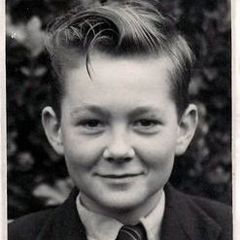
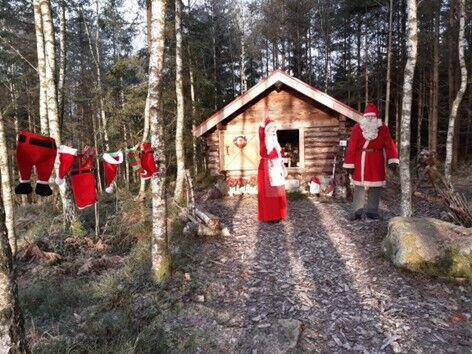

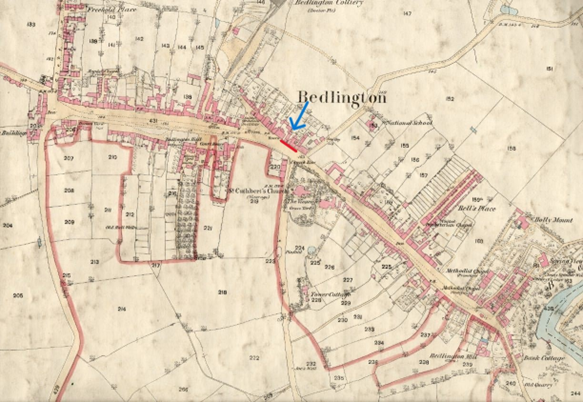
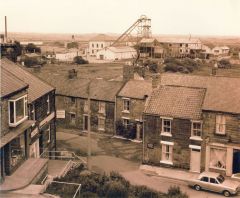

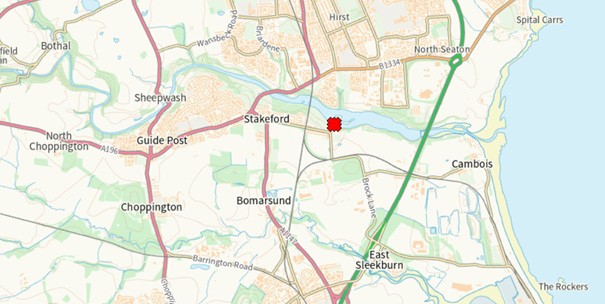




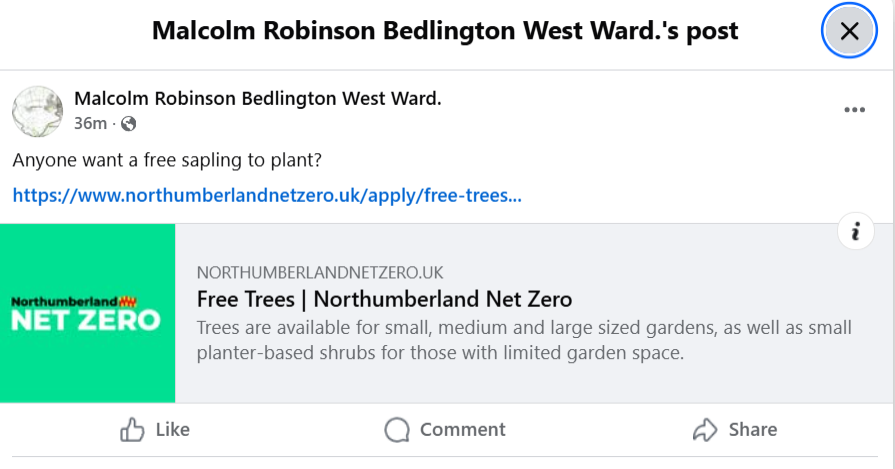

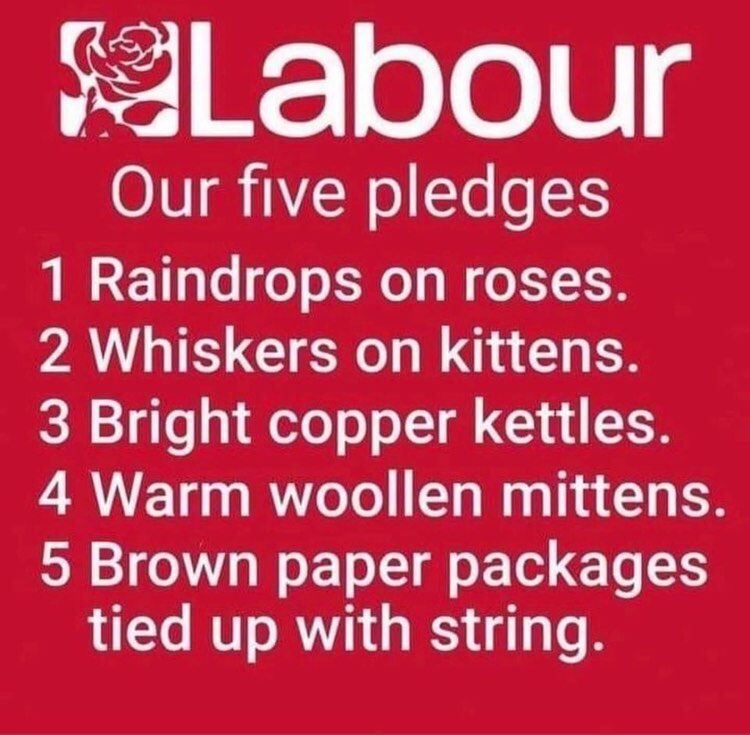
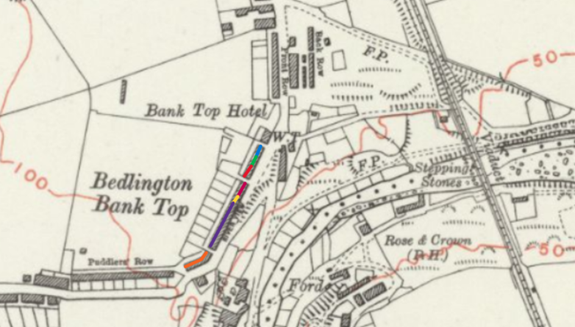

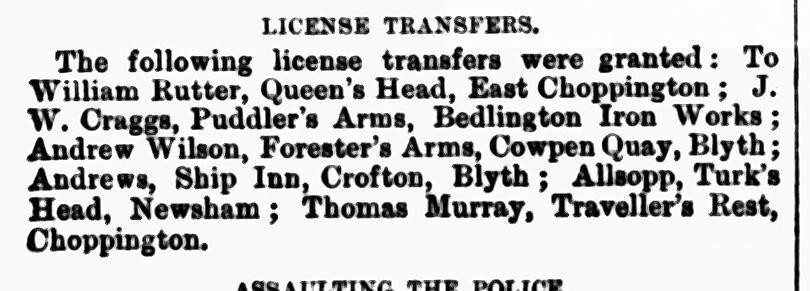

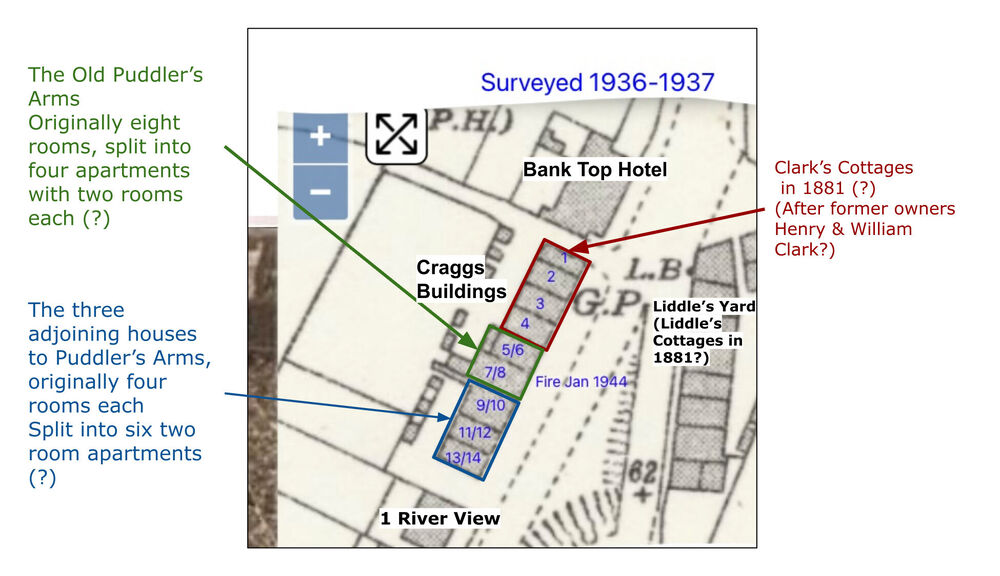
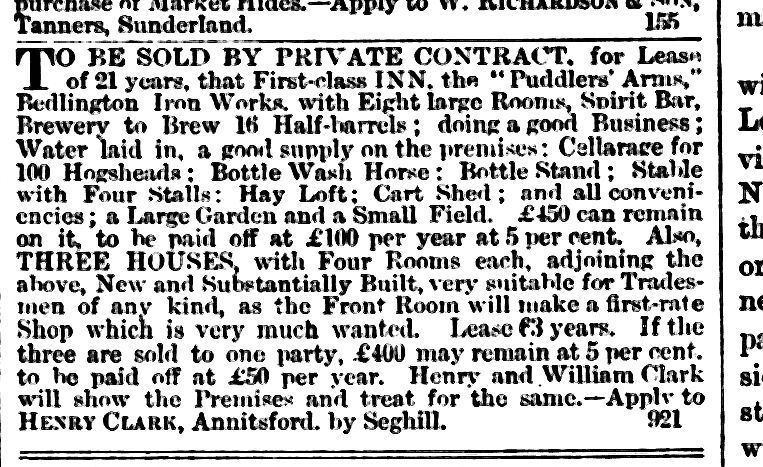
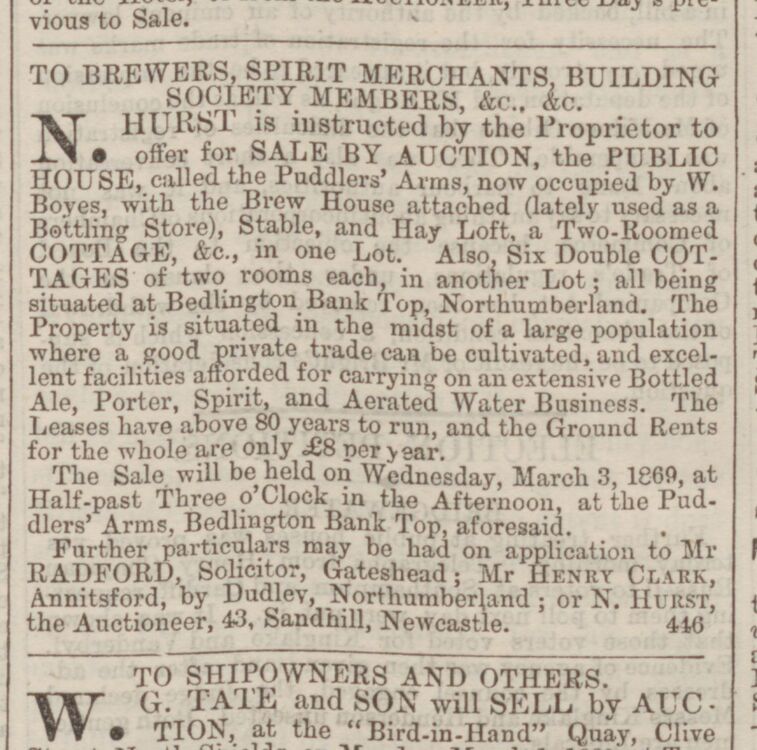
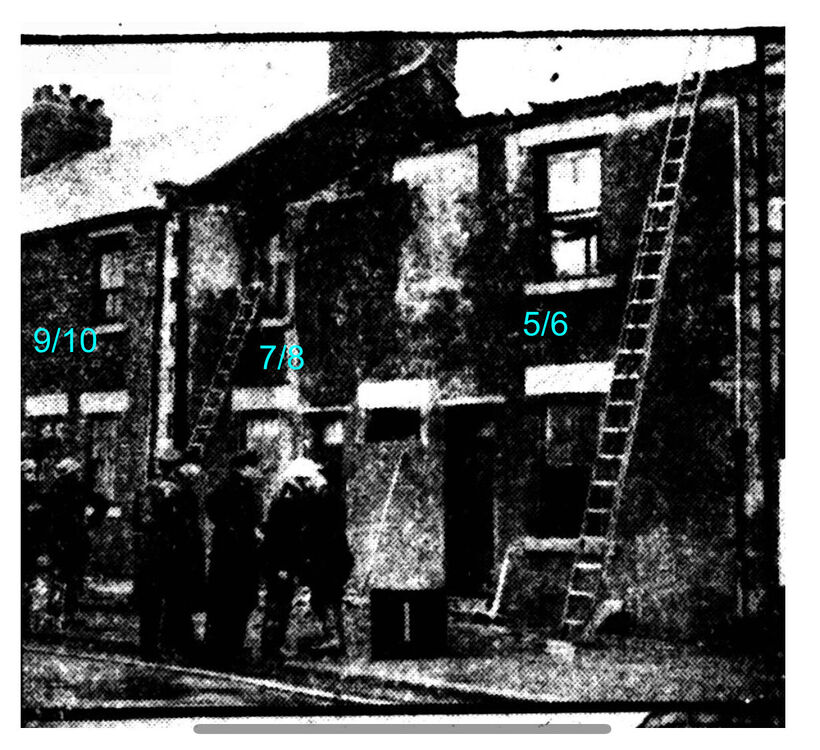
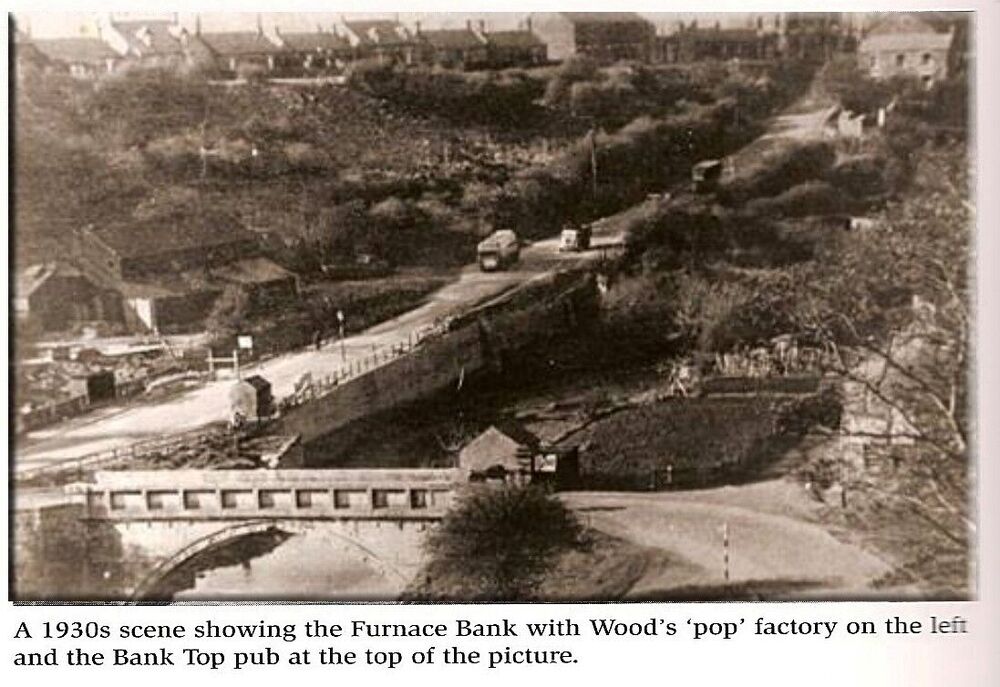
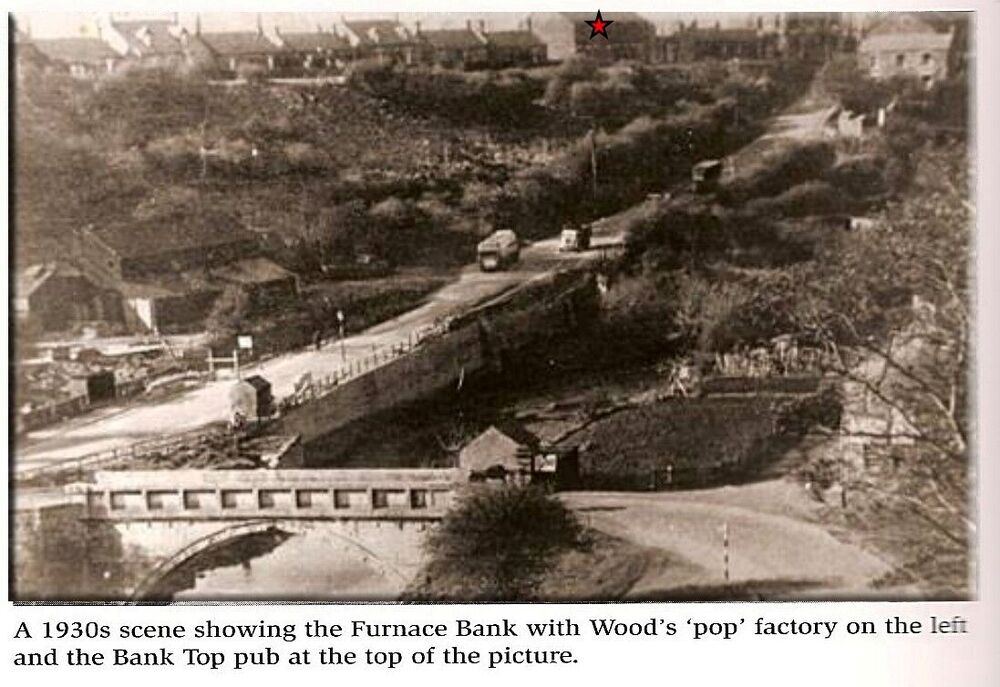
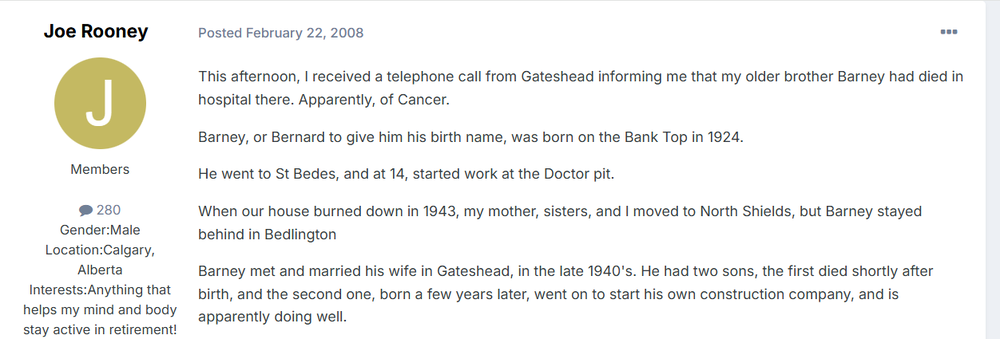
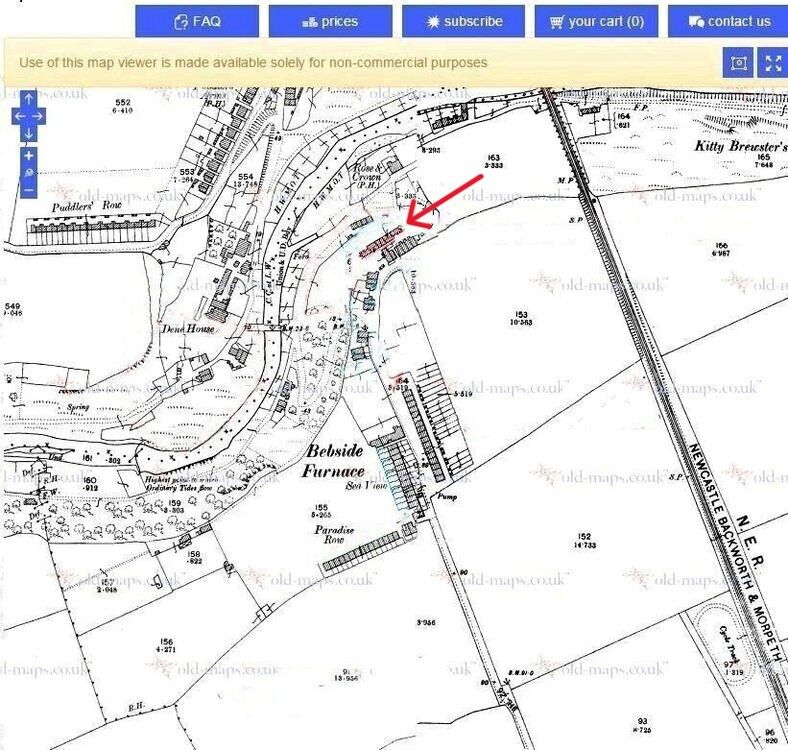
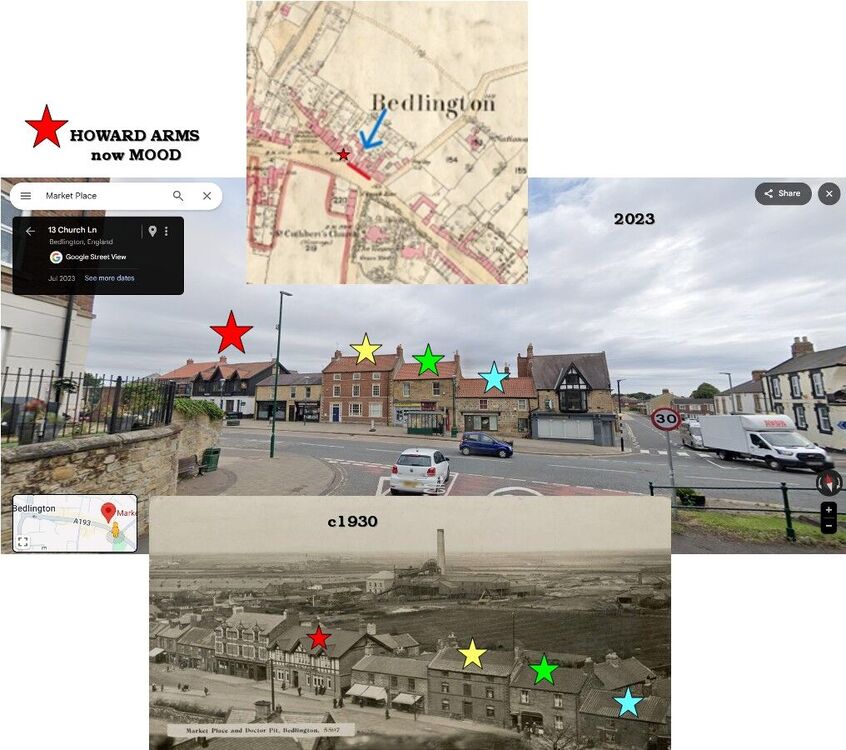

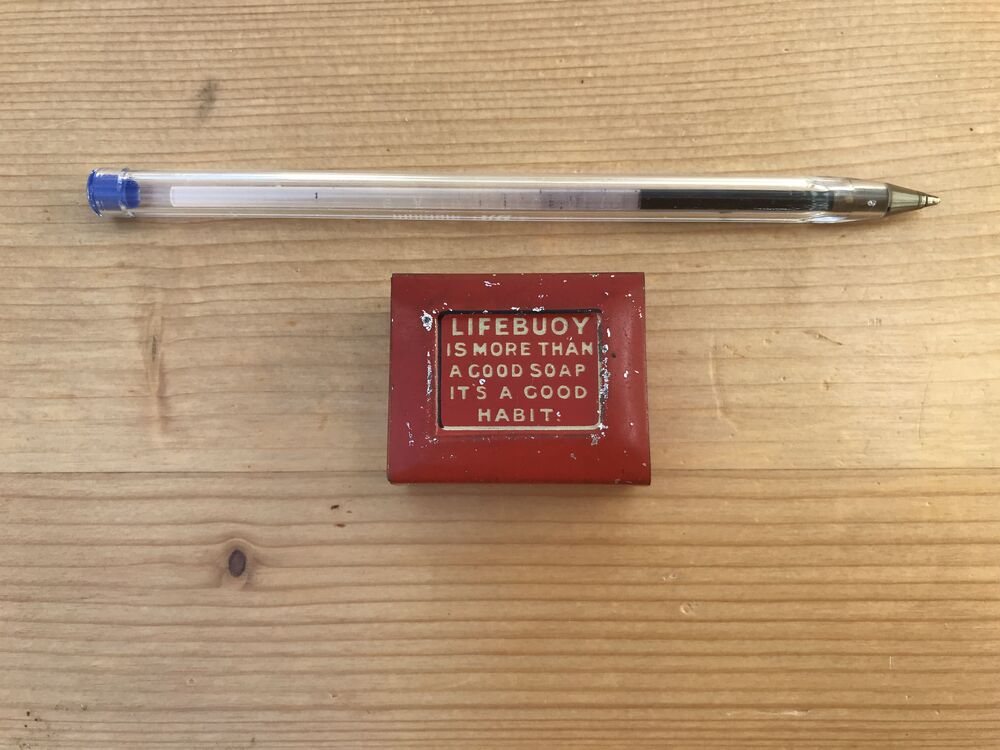
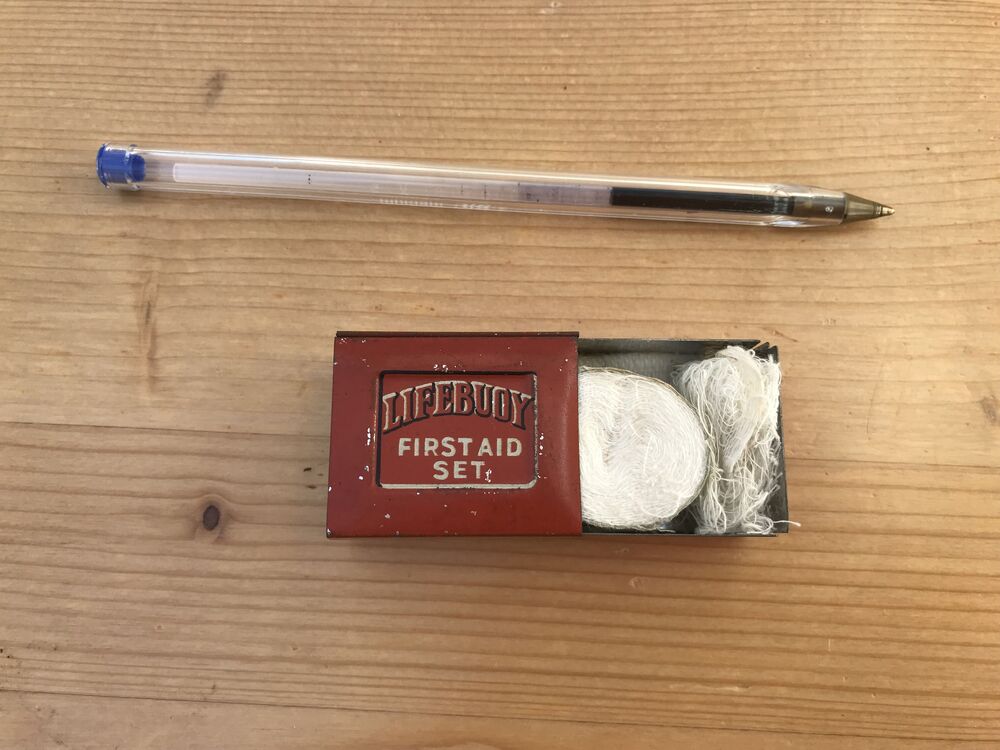

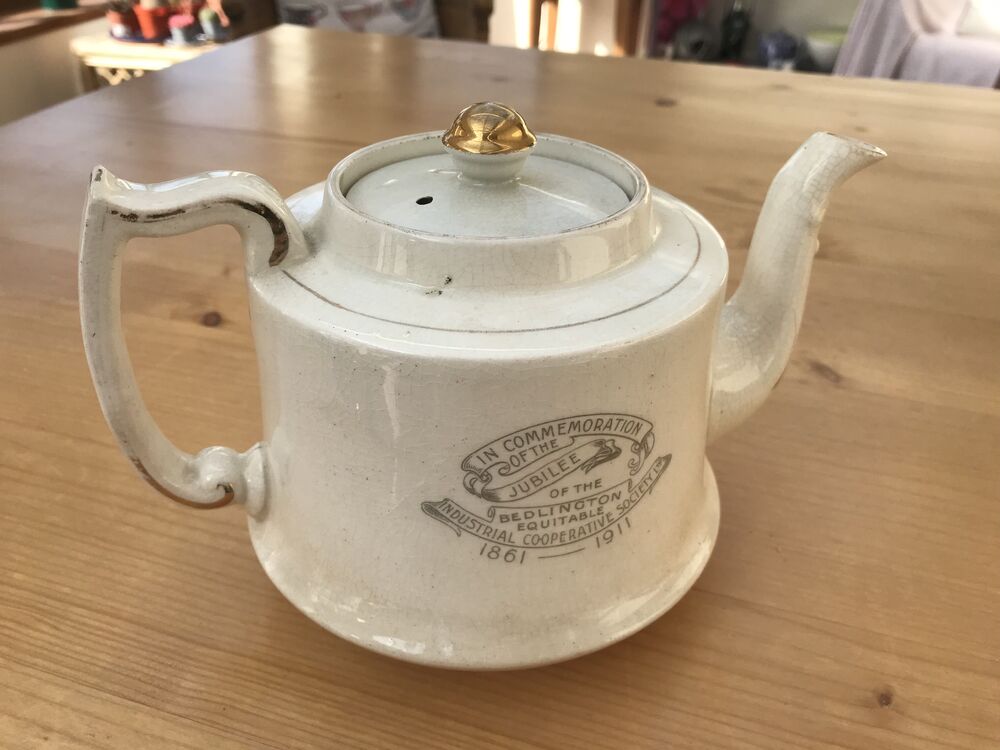


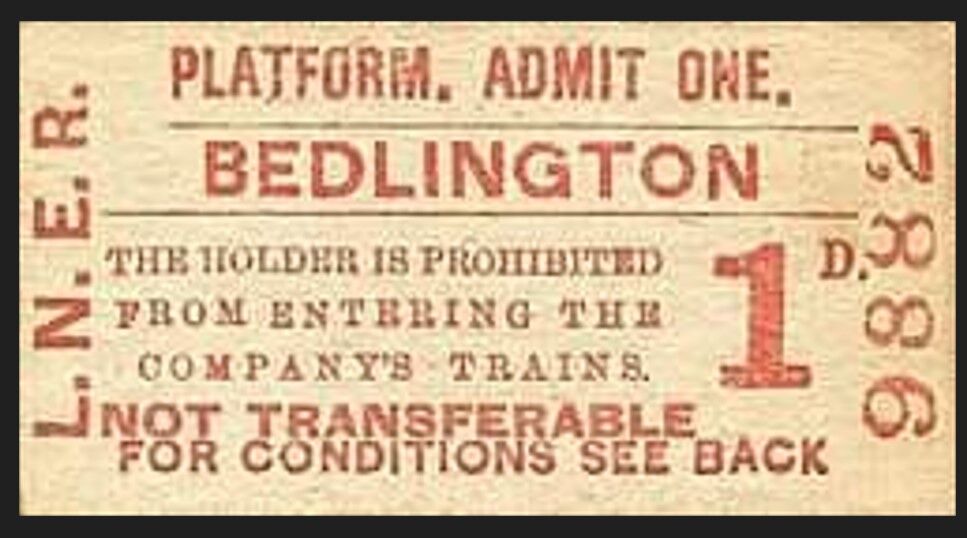
.thumb.jpg.b2109a67bd8c66ce5c985c3f9f9fdc0e.jpg)
.thumb.jpg.5f3c87572fd49e2784be478b629e84c2.jpg)
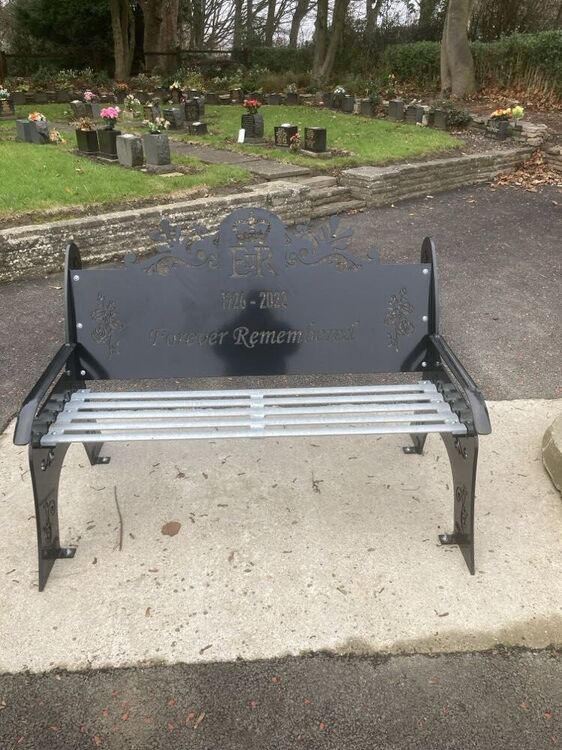
.thumb.jpg.e062f20e0b97a8772bc12bc2d9096079.jpg)
